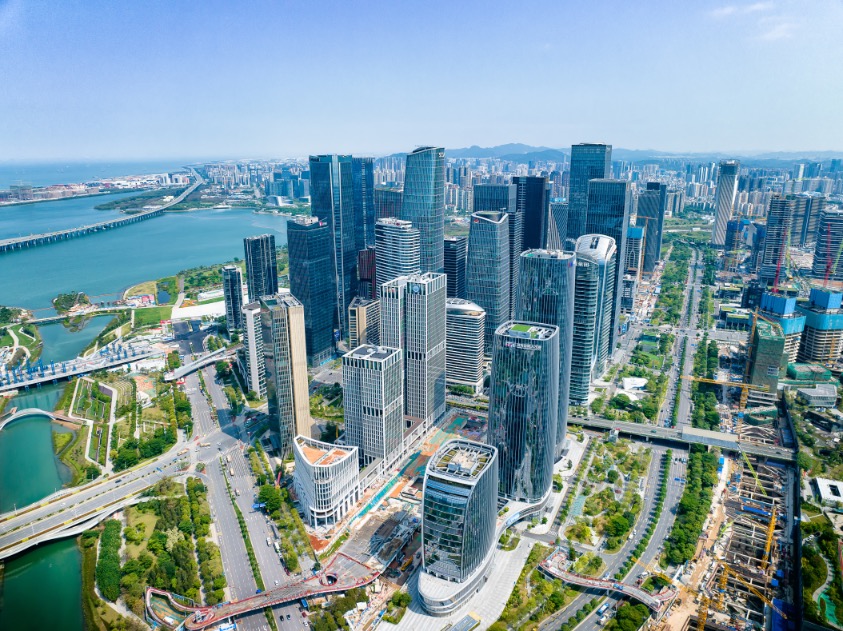On July 16, the Institute of Free Trade Zones of Sun Yat-sen University (SYSU) released the "2023-2024 China Pilot Free Trade Zone Institutional Innovation Index". According to the score results, Guangdong's Qianhai, Shanghai (Pudong), Guangdong's Nansha, Shanghai (Lingang), Tianjin, Beijing, Fujian's Xiamen, Sichuan's Chengdu, Guangdong's Hengqin, and Chongqing are among the top ten nationwide.
This index has been published for the ninth consecutive year and aims to provide constructive opinions and suggestions for the implementation and innovative direction of free trade zone institutional innovation policies.

(Photo: Nanfang Plus)
The index this year focuses on five dimensions, including trade facilitation, investment liberalization, financial reform and innovation, government function transformation, and legal environment, with a total of 22 free trade trial zones (57 subzones) participating in the evaluation. The top eight remained the same as last year; Guangdong's Hengqin rose to the top ten, ranking ninth, while Chongqing maintained the tenth position.
Three subzones of Xinjiang Pilot Free Trade Zone (Urumqi, Horgos, Kashgar) were included in the assessment for the first time.
"According to the calculation, the average institutional innovation score for the 57 free trade subzones nationwide is 75.90 points." Fu Zhengping, director of the Institute of Free Trade Zones of SYSU, noted that Qianhai scored 88.12 points, Pudong scored 87.86 points, and Nansha scored 87.50 points, securing the top three positions.
In terms of provincial rankings, Shanghai topped the list with a score of 86.18, while Guangdong ranked second with 86.06, leading the development of pilot free trade zones nationwide.
As the two most economically developed regions in China, both Shanghai and Guangdong have shown outstanding institutional innovation. Other subzones ranking from third to tenth include Tianjin, Beijing, Chongqing, Sichuan, Fujian, Hainan, Shaanxi, and Jiangsu. Regional rankings show that the average score for border free trade subzones is 70.56, for coastal subzones is 79.35, and for inland subzones is 74.52.
It is worth mentioning that the index system for the 2023-2024 China Pilot Free Trade Zone Institutional Innovation Index has added new indicators focusing on the digital economy, institutional-based openness, and green development. In the sub-rankings of institutional innovation indices in trade facilitation, investment liberalization, financial reform and innovation, government function transformation, and legal environment, both Qianhai and Nansha in Guangdong performed well, ranking in the top five.
Taking trade facilitation as an example, according to this year's index results, the average score for the trade facilitation indicator is 82.21 points, with Guangdong's Qianhai, Shanghai (Pudong), Guangdong's Nansha, Shanghai (Lingang), and Tianjin ranking in the top five.
"The institutional innovation in trade facilitation shows three characteristics: widespread application of digital technology, vigorous development of new trade formats, and an increasingly prominent trade linkage function," said Fu.
Qianhai ranks first nationwide in the trade facilitation index with a score of 92.44, mainly due to its significant achievements in the development of emerging trade formats, deep integration of Shenzhen-Hong Kong trade rules, and integrated innovation in trade facilitation.
The Institute of Free Trade Zones of SYSU was established on January 22, 2015. It is a key think tank in Guangdong Province focusing on pilot free trade zones and free trade ports, relying on the construction of the Institute of Guangdong, Hong Kong and Macao Development Studies of SYSU, a national high-level think tank.
(cnbayarea.org.cn & GDToday)